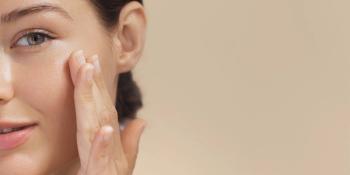
- Nutritional Outlook Vol. 17 No. 8
- Volume 17
- Issue 8
Probiotics for the Skin
Which delivery systems will likely work best for skin-care probiotics?
The human digestive system seems far removed from the human skin layer, but a surprisingly decades-old investigation of the human digestive system as a predictor of skin health is unraveling the intimacy by which these two human health systems may be connected.1
Back in 1955, David Loveman, MD, and colleagues from the Medical College of Alabama, Birmingham, investigated the enteric pathogenic bacteria living in 10 subjects with acne and 10 subjects without it. In the small study, researchers concluded that flora isolated from both groups were similar. Beneficial flora, such as Lactobacilli and Bifidobacteria, were curiously left out of the investigation.2 Since Loveman’s study, a team of Chinese researchers in 1999 witnessed “disruptions” of the normal intestinal flora in subjects with seborrheic dermatitis, an inflamed-skin condition.3 A Russian study two years later yielded a conclusion that 54% of acne patients in a large sample size exhibited impaired intestinal flora.4
These three studies on intestinal bacteria profiles in subjects with skin conditions stand out in history because, despite their limitations, there are simply few others to reference. But, while this particular kind of data is scarce, other supporting in vitro and in vivo data gets published each year, and on many skin conditions. In the meantime, while manufacturers must wait for the science to get stronger, many are wondering: which delivery systems will likely work best for skin-care probiotics?
Oral Applications
The majority of human clinical trials on probiotics for beauty and skin conditions involve consumable probiotics, such as dairy products and dietary supplements. And even though these probiotics go right to the digestive system, many researchers insist that it is precisely here where probiotics can influence the human skin.
Markus Lehtinen, PhD, senior scientist for Dupont Nutrition and Health (Copenhagen), a supplier of HOWARU probiotic cultures, says it’s important to remember that three quarters of immune cells reside in the gut, and any intestinal modulation that can results from consuming probiotics can have a systemic effect on immune health throughout the body. “The skin is an immunological organ and it is influenced by the immune system balance,” says Lehtinen.
Recent history shows a handful of successes with consumable probiotics in acne patients, specifically. When researchers at Kyung Hee University in Korea assigned 56 acne patients to drink a Lactobacillus-fermented beverage or placebo for 12 weeks, those drinking probiotics experienced significant decreases in skin lesions, grade assessment of acne, and production of an oily matter called sebum that accumulates in acne-afflicted skin.5 While the addition of the anti-inflammatory milk protein lactoferrin provided even better improvements, results with the probiotic drink alone support the potential for these friendly bacteria in acne management.
In a much earlier study on 40 Italian patients under standard acne/rosacea treatment, those who consumed 250 mg of freeze-dried L. acidophilus and B. bifidum reportedly saw better clinical outcomes as well as tolerance of antibiotics.6
While more research is warranted for figuring out just how probiotics can benefit acne and other skin conditions, experts like board-certified dermatologist Whitney Bowe, MD, say that probiotics are likely to have a significant impact on future products for acne and rosacea.
“Until then, I would recommend that patients with acne and rosacea see their dermatologist to talk about adding foods with live active cultures, such as yogurts, to their diets or taking an oral probiotic supplement daily,” said Bowe in an American Academy of Dermatology press release. “Although I don’t envision probiotics ever being used as a stand-alone treatment for acne or rosacea, they could be used as an effective combination therapy with prescription medications or over-the-counter topical treatments.”
Consumable probiotics show promise in other skin conditions, too. In many cases, researchers have assigned pregnant and nursing mothers to oral probiotics in an attempt to reduce the likelihood of their offspring developing unwanted skin conditions, such as atopic dermatitis and eczema. Some probiotic strains have had success in these maternal studies, but more research is needed.
Topical Applications
When probiotics are applied directly onto the skin, they are suddenly in a much different environment from the gastrointestinal tract. They are missing the particular moisture levels, temperature conditions, and substrates that allow them to live and grow in the gut. Because of these outstanding factors, a lot of industry experts argue that when probiotics are applied to the skin, they aren’t even probiotics anymore.
“The definition of probiotics is ‘a live microorganism which, when administered in adequate amounts consumed, confers a health benefit,’” says Mike Bush, senior vice president of Ganeden Biotech (Cleveland). “It kind of makes it so that the term probiotic can’t be used on skin care…If you think about it, it’s really hard to keep microorganisms alive on your face or anywhere else on your body, especially if you wash.”
Because of this logic, Ganeden’s approach to skin-care probiotics concerns an entirely separate product from its signature GanedenBC30 strain, which is sold in digestive health products around the world. For the purpose of skin care, Ganeden offers Bonicel and encourages manufacturers to label it as probiotic-derived.The ingredient is actually a fermentation byproduct of GanedenBC30, and in this state it contains lactic acid, bacteriocins, enzymes, and other metabolites that can help ailing skin. In cleansing bar and facial cream applications, the ingredient has shown, among other potential benefits, an ability to increase skin elasticity and moisturization, reduce skin roughness, and reduce fine lines, wrinkles, and eye puffiness.
But probiotic derivatives might not be the only avenue for which probiotics can be used as topical aids. “The ability of a probiotic to change the health and function of the skin may not rely necessarily on a probiotic strain surviving for long periods of time on the skin,” says Dr. Bowe. In fact, the topical application of probiotics may trigger the skin to quickly produce certain healthful compounds, thereby not requiring bacteria to survive for a very long time.
When researchers at the University of L’Aquila in Italy assigned 17 volunteers to a week’s worth of skin cream containing Streptococcus thermophilus, a species found in cheeses and yogurts, they witnessed a significant and relevant increase in skin levels of ceramide, a compound known to improve the barrier function of the outermost skin
layer, the stratum corneum, and whose loss may be a factor in the development of atopic dermatitis and psoriasis.7 The Italian team saw ceramide increases in as little as 15 minutes, and their work has been replicated.
It’s worth noting that a peculiar alternative for topical probiotic application involves do-it-yourself yogurt facial creams. Despite their popularity, no efficacy has been shown here.
The Gut-Brain-Skin Axis
While the intestines and the epidermis cotinue to show relationships, the brain may have an even greater influence on these two systems together. The theory is at least as old as 1930, when dermatologists John Stokes and Donald Pillsbury first introduced the concept of a “gut-brain-skin axis.”8
This theory is based on clinical evidence that emotionally stressed states are often associated with poor digestive health, and poor digestive health is often associated with poor skin health. In a recent analysis of 13,000 children living in China, those with acne were much more likely to experience bloating and constipation.9 The supporting clinical data is both recent and old.
Clinical evidence shows that stress alone, or in combination with refined processed foods, can actually slow digestion, says Bowe. And when that happens, it actually shifts the flora, the normal bacteria that lives in the gut, to an unhealthy environment. This unhealthy environment leads to increased permeability of the intestinal lining, which can ultimately trigger system-wide inflammation and a subsequent result of chronic skin inflammation.
So the problem of skin may be a digestive one, but it may also be a cognitive one. For all the possibilities, a helping of friendly-cultures may help, and a variety of delivery systems may be efficacious.
References
- WP Bowe et al., “Acne vulgaris, probiotics, and the gut-brain-skin axis: from anecdote to translational medicine,” Beneficial Microbes, vol. 5, no. 2 (June 2014): 185–199.
- D Loveman et al., “Comparative studies of enteric bacterial flora in acne vulgaris,” Journal of Investigative Dermatology, vol. 25 (1955): 135–137.
- H Zhang et al., “Quantitative studies on normal flora of seborrhoeic dermatitis,” Chinese Journal of Dermatology, vol. 32 (1999): 399–400.
- LA Volkova et al., “[Impact of the impaired intestinal microflora on the course of acne vulgaris],” Klinical Medicine (Russia), vol., 79 (2001): 39–41.
- J Kim et al., “Dietary effect of lactoferrin-enriched fermented milk on skin surface lipid and clinical improvement of acne vulgaris.,” Nutrition, vol. 26, no. 9 (September 2010): 902–909.
- F Marchetti et al., “[Efficacy of regulators of the intestinal bacterial flora in the therapy of acne vulgaris],” La Clinica Terapeutica, vol. 122, no. 5 (1987): 339–343.
- L Di Marzio et al., “Effect of the lactic acid bacterium Streptococcus thermophilus on ceramide levels in human keratinocytes in vitro and stratum corneum in vivo,” The Journal of Investigative Dermatology, vol. 113, no. 1 (July 1999): 98–106.
- J Stokes and D Pillsbury, “The effect on the skin of emotional and nervous states: III. Theoretical and practical consideration of a gastrointestinal mechanism,” American Medical Association: Archives of Dermatology and Syphilology, vol. 22, no. 6 (December 1930): 962–993.
- H Zhang et al., “Risk factors for sebaceous gland diseases and their relationship to gastrointestinal dysfunction in Han adolescents,”Journal of Dermatology, vol. 35, no. 9 (September 2008): 555–561.
Photo © iStockphoto.com/Quanthem
Articles in this issue
about 11 years ago
Regulatory Concerns Are Shifting the Focus of Digestive Healthabout 11 years ago
Prebiotic Ingredients: Nondigestible Oligosaccharidesabout 11 years ago
Natural and Healthy Pet Food Ingredientsabout 11 years ago
Brain Health Dietary Supplement Ingredient Research Updateabout 11 years ago
Dietary Supplements for Postmenopausal Osteoporosisabout 11 years ago
Can Dietary Supplements Really Help Control Allergies?about 11 years ago
Is There a Risk in Premix Overages?about 11 years ago
Ingredient Spotlight: Prickly PearNewsletter
From ingredient science to consumer trends, get the intel you need to stay competitive in the nutrition space—subscribe now to Nutritional Outlook.





